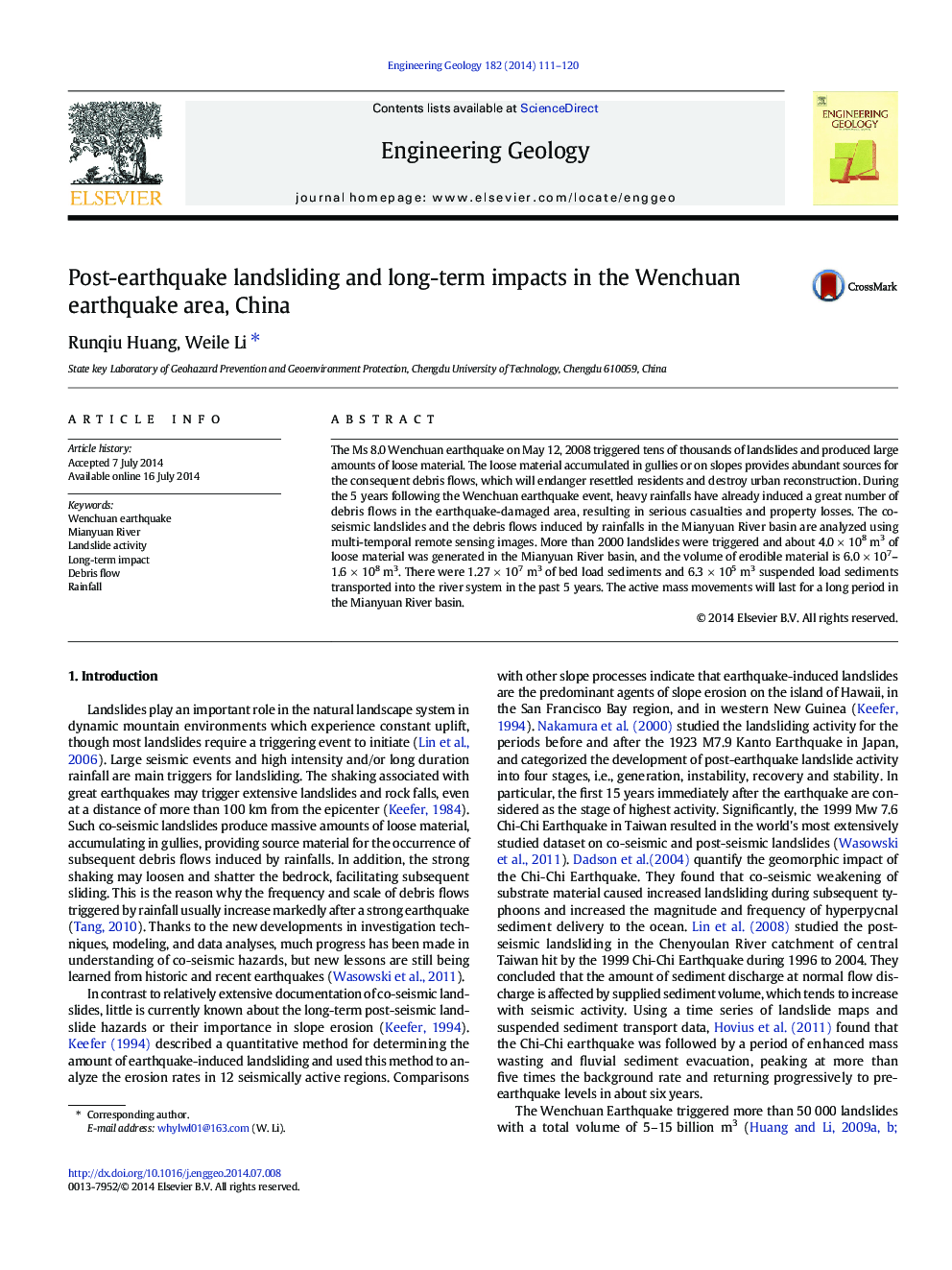| Article ID | Journal | Published Year | Pages | File Type |
|---|---|---|---|---|
| 6447845 | Engineering Geology | 2014 | 10 Pages |
Abstract
The Ms 8.0 Wenchuan earthquake on May 12, 2008 triggered tens of thousands of landslides and produced large amounts of loose material. The loose material accumulated in gullies or on slopes provides abundant sources for the consequent debris flows, which will endanger resettled residents and destroy urban reconstruction. During the 5Â years following the Wenchuan earthquake event, heavy rainfalls have already induced a great number of debris flows in the earthquake-damaged area, resulting in serious casualties and property losses. The co-seismic landslides and the debris flows induced by rainfalls in the Mianyuan River basin are analyzed using multi-temporal remote sensing images. More than 2000 landslides were triggered and about 4.0Â ÃÂ 108Â m3 of loose material was generated in the Mianyuan River basin, and the volume of erodible material is 6.0Â ÃÂ 107-1.6Â ÃÂ 108Â m3. There were 1.27Â ÃÂ 107Â m3 of bed load sediments and 6.3Â ÃÂ 105Â m3 suspended load sediments transported into the river system in the past 5Â years. The active mass movements will last for a long period in the Mianyuan River basin.
Related Topics
Physical Sciences and Engineering
Earth and Planetary Sciences
Geotechnical Engineering and Engineering Geology
Authors
Runqiu Huang, Weile Li,
